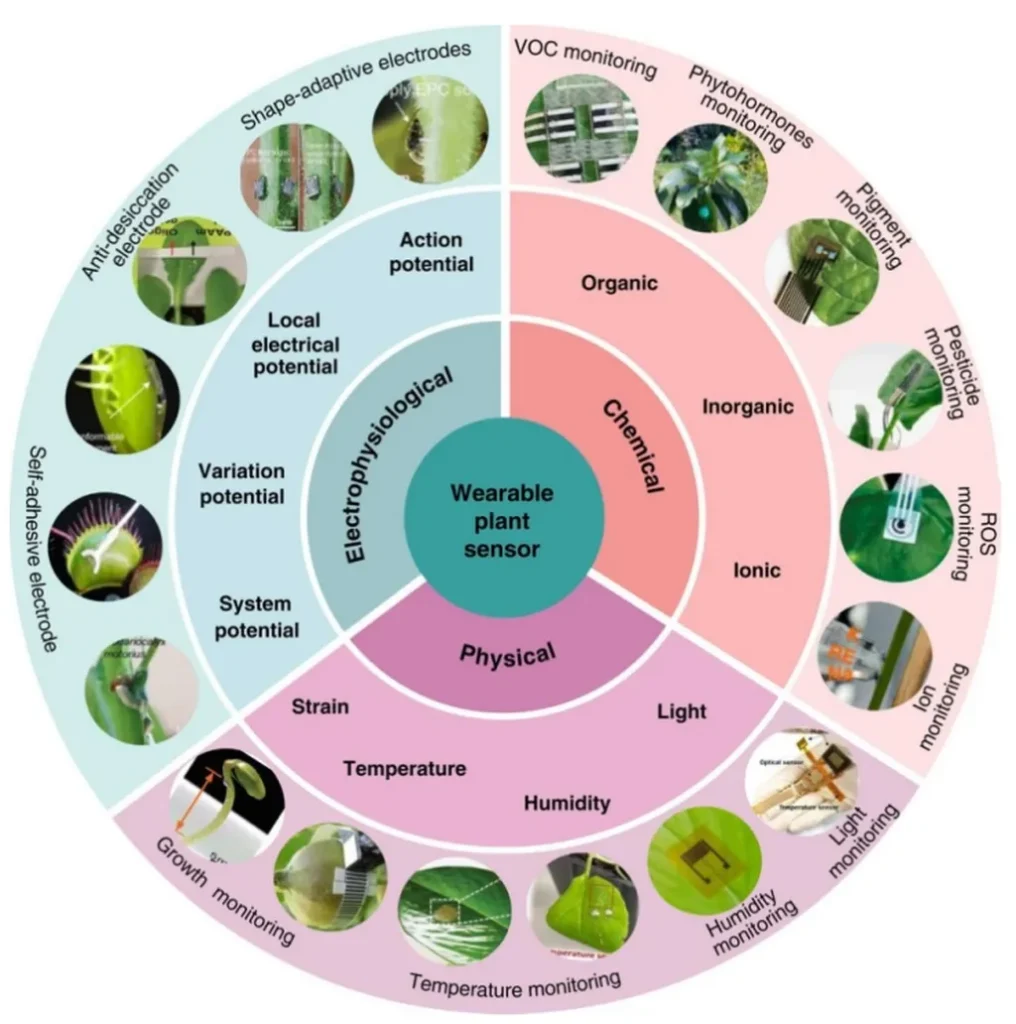In the quest for sustainable agriculture, precision monitoring of crops is becoming increasingly crucial. A recent study published in *Applied Surface Science Advances* introduces a groundbreaking innovation in plant-wearable sensors that could revolutionize how we track plant health and growth. Led by Ji-Young Oh from the Hyper-Reality Metaverse Research Laboratory at the Electronics & Telecommunications Research Institute (ETRI) in Daejon, South Korea, the research presents a novel approach to fabricating ultra-thin, transparent, and minimally invasive sensors using patterned substrate transfer printing (PSTP).
The sensors, which integrate silver nanowires (AgNWs) with Indium tin oxide (ITO) and poly(3,4-ethylenedioxythiophene):poly(styrenesulfonic acid) (PEDOT:PSS), offer a range of impressive properties. These include high transparency (∼80% transmittance), low sheet resistance (∼25 Ω/sq), and remarkable stability under significant strain (up to 150%). The sensors’ tunable strain sensitivity allows for accurate monitoring of plant growth and temperature without impeding the plant’s natural processes.
“Our goal was to create a sensor that could seamlessly integrate with plants, providing real-time data without causing any harm,” explained Ji-Young Oh. “The PSTP method allows us to achieve high-resolution patterning of hybrid conductors onto flexible substrates, making the sensors both highly functional and minimally invasive.”
The implications for the agriculture sector are substantial. Traditional methods of crop monitoring, such as morphological analysis and remote sensing, often lack the resolution and continuity needed for precise, organ-level tracking. Wearable electronics, like the ones developed in this study, offer a promising alternative. By providing continuous, high-resolution data, these sensors can help farmers optimize irrigation, nutrient delivery, and pest control, ultimately leading to increased crop yields and more sustainable farming practices.
Beyond agriculture, the sensors have potential applications in flexible and stretchable devices, including electrochromic displays and light-emitting diodes (LEDs). The versatility of the PSTP fabrication method suggests that it could be a universal platform for next-generation bio-integrated electronics.
“This research opens up new possibilities for the integration of electronics with biological systems,” said Oh. “We believe that our sensors could pave the way for a new era of precision agriculture and wearable technology.”
As the world grapples with the challenges of climate change and population growth, innovations like these are more important than ever. The development of transparent, stretchable, and biocompatible sensors represents a significant step forward in the quest for sustainable agriculture and could shape the future of the agritech industry.

